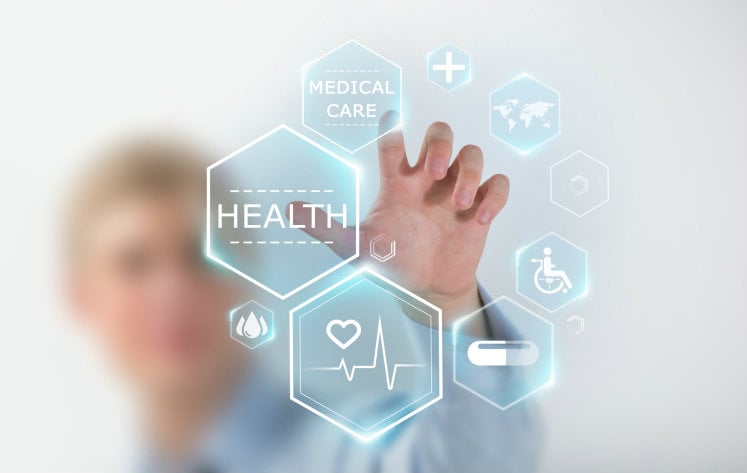A Comprehensive Overview on Exactly How Healthcare RCM Works to Improve Payment and Collections
Browsing the intricacies of health care earnings cycle monitoring (RCM) is essential for companies aiming to boost their invoicing and collections processes. The guide unpacks the complexities of RCM, from patient registration to balance dues administration, using insights into maximizing each action. Integrating sophisticated innovation and standardized procedures can considerably minimize case rejections and accelerate repayment cycles. Yet, real difficulty exists in effortlessly combining these aspects to boost capital. As we check out the core components and approaches that drive performance, one question remains: how can health care entities best setting themselves to thrive financially in an ever-evolving sector?
Understanding Revenue Cycle Administration
Realizing the details of Profits Cycle Administration (RCM) is essential for medical care organizations intending to optimize their financial performance. RCM is a critical management function that incorporates the whole financial procedure of client treatment, from the first consultation readying to the last payment of the equilibrium. It is a complicated procedure made to recognize, accumulate, and manage the earnings from the solutions offered to clients. Effective RCM ensures that medical care suppliers receive exact and timely settlements, decreasing the threat of earnings loss and boosting cash flow.
The RCM procedure starts when an individual routines an appointment and extends via the patient's care journey, consisting of invoicing and collections. A crucial purpose is to lower the time in between obtaining and offering a solution payment, thus improving the company's monetary health. RCM includes different functions such as individual enrollment, insurance coverage confirmation, fee capture, coding, claims submission, repayment posting, and handling appeals and rejections.
Key Elements of RCM
In the realm of Income Cycle Administration (RCM), understanding its crucial parts is essential to attaining monetary performance within health care companies. RCM is a comprehensive process that encompasses various phases, each crucial to making certain efficient invoicing and collections. The key parts consist of person enrollment, insurance policy confirmation, charge capture, coding, insurance claim entry, payment uploading, and receivable administration.


Once coded, cases are submitted to payers, where accuracy is paramount to stay clear of hold-ups or beings rejected - Healthcare RCM. Payment uploading includes recording the gotten settlements, which permits the reconciliation of accounts. Finally, accounts receivable administration concentrates on tracking and dealing with unpaid claims, making certain timely follow-up and resolution
Each element of RCM is adjoined, and ineffectiveness in any component can interrupt the entire cycle. As a result, understanding these components is necessary for health care suppliers to optimize income and enhance their monetary wellness.
Strategies for Efficient Billing

Systematizing billing procedures throughout the company is one more vital approach. Developing clear standards for documentation, coding, and entry helps preserve uniformity and conformity with regulative requirements. Educating team consistently on these procedures ensures everybody is up-to-date with the most up to date adjustments in invoicing codes and payer plans.
Accurate fee capture is necessary in stopping revenue leak. Executing regular audits and surveillance systems permits the recognition and adjustment of discrepancies prior to they influence profits. In addition, maintaining open lines of interaction with payers helps to rapidly fix any disputes or misunderstandings that may arise.

Finally, appealing clients early in the billing process by giving clear estimates and instructional materials about their economic responsibilities can considerably minimize complication and boost payment timeliness. These techniques jointly add to a more efficient and financially healthy invoicing system.
Enhancing Collections Procedures
A durable collections procedure is important for maintaining financial security within medical care organizations. Offered the intricacies of medical billing and the range of payer demands, improving the collections process entails executing tactical procedures that make certain precise and prompt payment of services provided. Central to this is using innovation to automate and improve processes, enhancing Home Page and reducing hand-operated errors efficiency. Automation tools can aid in tracking claim statuses, sending prompt pointers to clients, and handling rejections better.
Educating team to comprehend the nuances of insurance coverage plans and billing codes is equally crucial. This expertise encourages them to deal with invoicing discrepancies rapidly and connect efficiently with patients regarding their economic obligations. Furthermore, transparent and clear person interactions are vital. Supplying thorough explanations of costs and using versatile settlement plans can boost client contentment and timely settlements.
Normal audits of the collections procedure need to be carried out to determine areas for renovation and make certain compliance with guidelines. By examining information, healthcare companies can recognize fads, expect prospective concerns, and adapt techniques appropriately (Healthcare RCM). Ultimately, a well-enhanced collections process not just supports economic health and wellness but also contributes to an extra smooth experience for people and team alike
Optimizing Income Streams
Structure upon the structure of a strong collections procedure, health care organizations can further boost their economic stability by purposefully enhancing revenue streams. This involves a multi-faceted strategy, beginning with a comprehensive analysis of existing revenue sources to recognize inefficiencies and areas for growth. Utilizing sophisticated information analytics devices makes it possible for companies to gain insights right into payer mix, individual demographics, and service usage patterns, allowing for data-driven choices that improve revenue capture.
Applying automated invoicing systems can dramatically reduce errors and speed up claims refining, making sure that income is collected a lot more successfully. Furthermore, enhancing payer agreements with regular settlements can boost reimbursement rates and terms, straight impacting the bottom line. Expanding solution offerings, such as integrating telehealth or health care, can likewise draw in a broader patient base, hence raising income possibility.
An additional critical component is boosting patient engagement and satisfaction, as completely satisfied patients are most likely to follow therapy plans and make timely payments. Using adaptable settlement choices and clear payment techniques can improve collections and foster patient loyalty. Healthcare RCM. By adopting these methods, health care companies can develop an extra resilient financial structure, ensuring sustained growth and security in an ever-changing sector landscape
Conclusion
In final thought, health care Profits Cycle Monitoring (RCM) plays a crucial function in enhancing payment and collections procedures by integrating key components such Recommended Reading as person registration, insurance coverage verification, fee capture, coding, asserts entry, and accounts receivable management. By utilizing innovative modern technology, standardizing procedures, and cultivating person interaction, doctor can significantly minimize claim denials, speed up settlement cycles, and enhance money circulation. This comprehensive strategy to RCM eventually results in enhanced economic effectiveness and sustainability for health care organizations.
The RCM procedure begins when a patient timetables a consultation and expands with the person's treatment trip, including payment and collections.An additional critical part is boosting client interaction and complete satisfaction, as completely satisfied individuals are much more most likely to adhere to therapy strategies and make timely payments. Supplying adaptable repayment options moved here and transparent payment practices can boost collections and foster individual commitment.In final thought, healthcare Revenue Cycle Administration (RCM) plays a crucial duty in enhancing billing and collections processes by incorporating key components such as client registration, insurance policy verification, fee capture, coding, asserts submission, and accounts receivable administration. By using sophisticated modern technology, systematizing treatments, and fostering patient engagement, healthcare companies can considerably minimize claim denials, increase settlement cycles, and improve money circulation.
Comments on “Just How Healthcare RCM Solutions Streamline Payment and Collections”